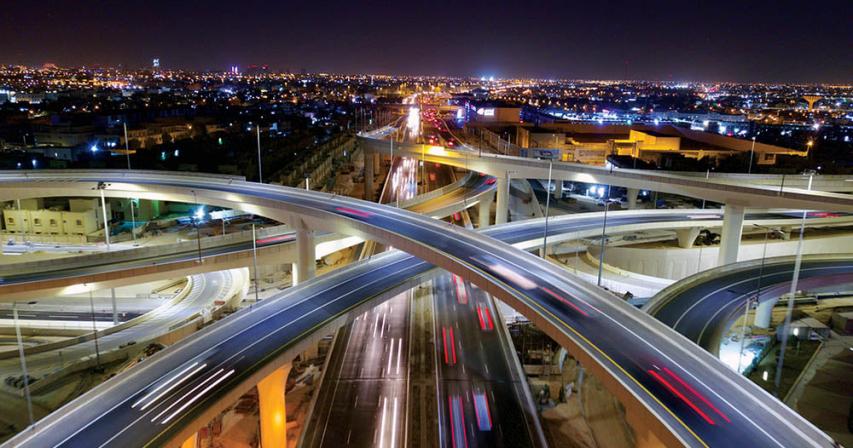60% of Material Used in Sabah Al Ahmad Corridor Are Locally Made
- 3 years ago

Sabah Al Ahmad Corridor is one of the most important projects implemented by the Public Works Authority (Ashghal) as a new lung of Doha.
Ashghal relied in implementing the project on the local product, whether through locally made materials or through Qatari companies, in line with the States drive to support the local product.
In statements to Qatar News Agency (QNA) on the sidelines of the ceremony held Wednesday on the occasion of inaugurating Sabah Al Ahmad Corridor, officials in Ashghal stated that 60% of the material used in the projects were locally manufactured, noting that the project will lead to a great traffic flow in Doha and will contribute significantly to facilitating access to six of the 2022 FIFA World Cup stadiums.
Manager of Highway Projects Department at Ashghal Eng. Badr Darwish confirmed that the opening of Sabah Al Ahmad Corridor coinciding with the celebration of the National Day and Liberation Day Anniversary of the State of Kuwait comes as a consolidation of the fraternal relations between the two brotherly countries and a culmination of the efforts exerted by the State of Kuwait for reunification and the achievement of the Gulf interest.
Speaking to QNA, Eng. Badr Darwish noted that the main road was opened to traffic months ahead of schedule, noting that the construction work of the project was not affected by the coronavirus pandemic.
He praised the efforts of the State which resulted in the completion of the project works as soon as possible, indicating that 60% pf the material used in the implementation of the project were locally made, based on Ashghal's keenness on relying on the local product, whether through homemade materials, or Qatari companies, in line with the State's drive to support the local product.
He noted that the project included 6,300,000 cubic meters of excavation, backfilling and paving works as well as the use of approximately 1,442,000 tons of asphalt and 1,520,000 cubic meters of reinforced concrete. The infrastructure lines installed include 220km of communication lines, about 470 km of power lines, 205km of drainage lines extension and about 77km of treated sewer lines.
He stated that Sabah Al Ahmad Corridor is considered as lung of Doha as it will contribute greatly to ease traffic congestion in Doha in general, especially for those coming from south to north, as the road is an ideal alternate route to Doha Expressway and February 22nd Street, with better traffic flow, as the commuter from HIA through this road will reach Umm Lekhba Interchange on Al Shamal Road in less than 18 minutes, while the same journey through Doha Expressway and 22 February Street takes about 50 minutes, which means cutting 70% of travel time.
The new road is also a main link for those coming from the south of Qatar to its north through Doha city, as it will integrate Doha Expressway with its southern part (Al Wakra Parallel Road) and linking to Mesaieed Road through Al Thumama Stadium Interchange, which is considered a distribution point to the Doha Expressway on one hand, and to Sabah Al Ahmad Corridor on the other hand.
Highlighting the special features of Sabah Al Ahmad Corridor, Eng. Darwish said that the new road is the first road in Qatar to be named Corridor and it is written on signboards in distinctive calligraphy similar to Al Majd Road, to distinguish it from the rest of the names of roads and streets in Qatar.
He noted the integration of Mesaimeer Bridge, Bu Hamour Bridge and Cable-stayed Bridge, noting that the Mesaimeer Bridge extended along 1600 meters, and the Bu Hamour Bridge of extended along 900 meters on the corridor to facilitate free flow traffic from the south of Sabah Al Ahmad Corridor towards the cable- stayed bridge over Haloul intersection and Faleh Bin Nasser interchange.
Comments